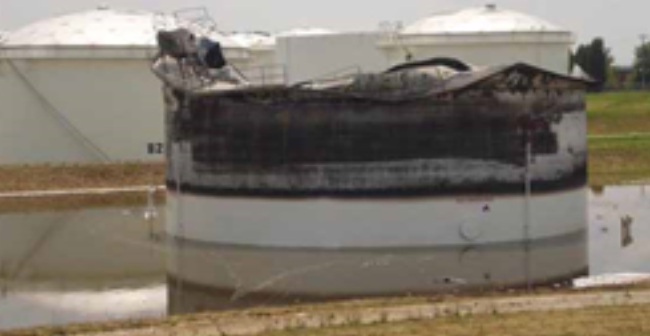Lightning Master Corporation CEO, Bruce Kaiser, has released a new article detailing the need for lightning protection systems on aluminum geodesic domes. Geodesic domes are prone to direct and indirect lightning strikes and damage, including disastrous tank fires. Risk assessments are critical when determining the proper lightning protection systems for geodesic domes. The best course of action is to consult with lightning protection professionals, such as Lightning Master Corporation.
CLEARWATER, Fla. (PRWEB) February 12, 2019
Bruce Kaiser, President and founder of Lightning Master Corporation and a leading international authority on lightning protection systems and surge solutions for industrial and manufacturing enterprises, has written a new article detailing the need for lightning protection systems for aluminum geodesic domes. These domes cover petroleum and other types of storage tanks.
A quote from Kaiser’s article examines this issue further:
“There has been discussion recently concerning the need for a dedicated lightning protection systems on aluminum geodesic domes covering petroleum storage tanks. This is partly due to recent lightning-caused fires in such structures.”
There are two areas of concern: direct lightning attachment and conducting lightning energy to ground. The lightning attachment discussion centers on the suitability of dome components to sustain a direct lightning strike without damage, particularly burn through. The current conducting discussion centers on the ability of the dome structure, roof attachment to the tank rim, and the tank shell to safely conduct the lightning energy to ground. There are some apologists for not protecting these structures basing their arguments on studies regarding other types of aluminum structures. However, the incidence of even one storage tank fire argues persuasively against the relevance of such studies to storage tanks.”
“When reviewing applicable standards and recommended practices, we follow NFPA (National Fire Protection Association) 780,” says Kaiser.
There are three methods to determine a lightning rod’s zone of protection: layout, angle, and rolling sphere. Beams and nodes are generally sufficiently thick to withstand direct lightning attachment, panels are not. So installing air terminals on the nodes extend zones of protection to include panels.
Risk Assessments Critical
Companies involved in oil, gas, and petrochemical storage are particularly cognizant of lightning protection systems. In addition to known risk factors, additional analysis is needed for sites:
- Considered operationally critical
- Having considerable value
- In environmentally sensitive or heavily populated areas
- Located in exposed, high-lightening areas
- Previously experienced static or lightning events
- Subject to additional local/regional construction code regulations
- With difficult accessibility
Bruce Kaiser says the best way to maintain safe lightning protection systems’ risk threshold is to consult with experienced professionals. You may consider adding air terminals and bonding to one or more geodesic dome tanks.
Kaiser concludes with, “For most managers in this business, safety isn’t an option. It’s a priority.”
If adding a lightning protection system, organizations should consult Underwriters Laboratories for a third-party certification. UL is a Nationally Recognized Testing Laboratory.
“Often an owner/operator will desire a third-party certification of a completed lightning protection installation. Underwriters Laboratories (UL) is the Nationally Recognized Testing Laboratory (NRTL – pronounced to rhyme with “turtle”) in the lightning protection industry.” Bruce Kaiser explains.
1 Bruce Kaiser has authored numerous articles on static and lightning protection for domestic and international trade and professional publications. He has spoken at many professional organization trade shows and seminars. Kaiser holds multiple patents on various technologies relating to lightning and static protection.
He serves as a principal member of the National Fire Protection Association NFPA 780, Committee on Lightning Protection (the committee which writes the U.S. lightning protection standard); the American Petroleum Institute API 545, committee on lightning protection for hydrocarbon storage tanks; the American Petroleum Institute API 2003, committee on Protection Against Ignitions Arising Out of Static, Lightning, and Stray Currents; and Underwriters Laboratories UL 96 STP. Kaiser also served as a principal member of NFPA 781, Committee on Lightning Protection using Early Streamer Emitting (ESE) Air Terminals and the Institute of Electrical and Electronics Engineers IEEE 1576, the committee on lightning protection using charge transfer (static dissipation) systems.


